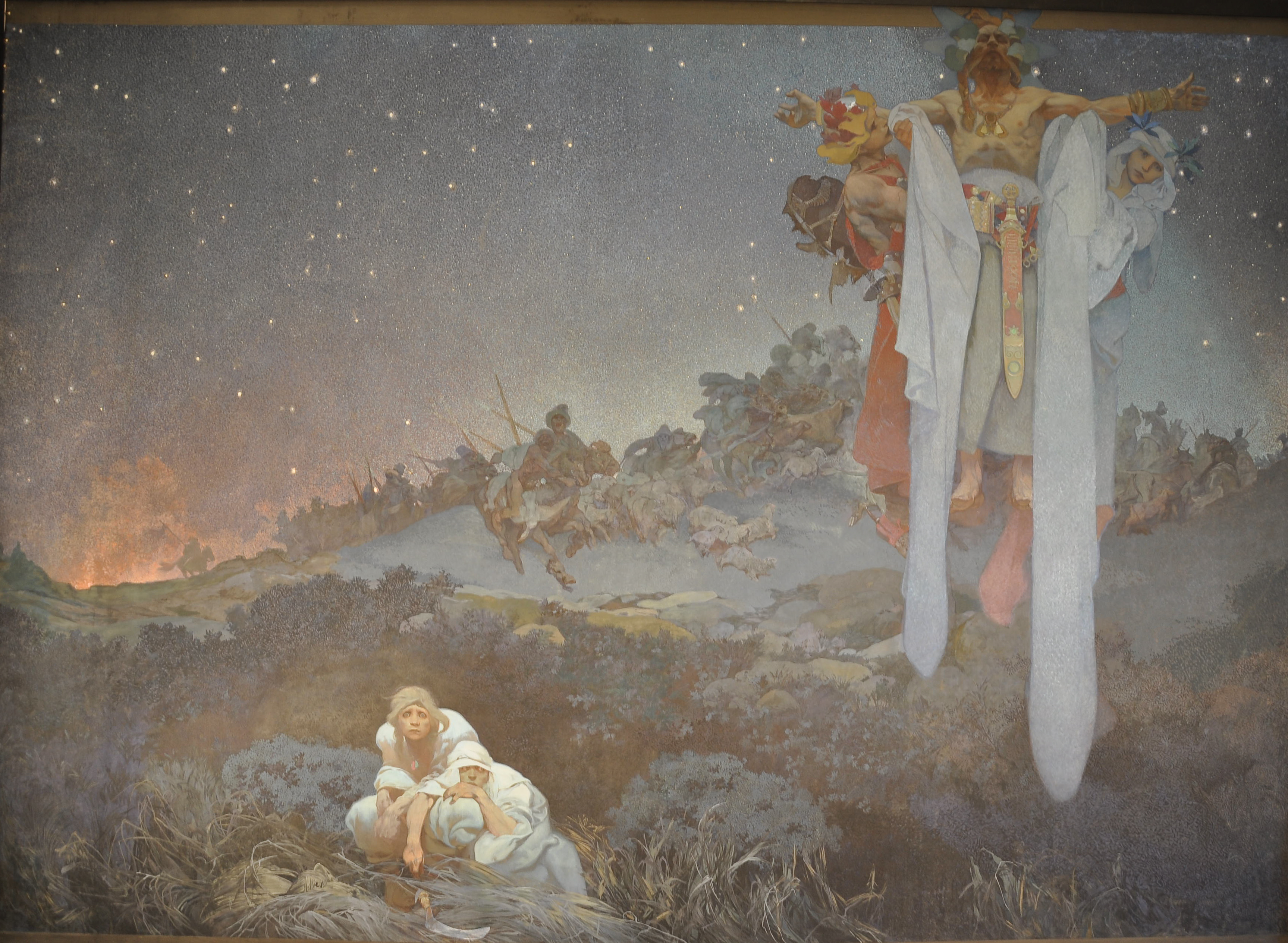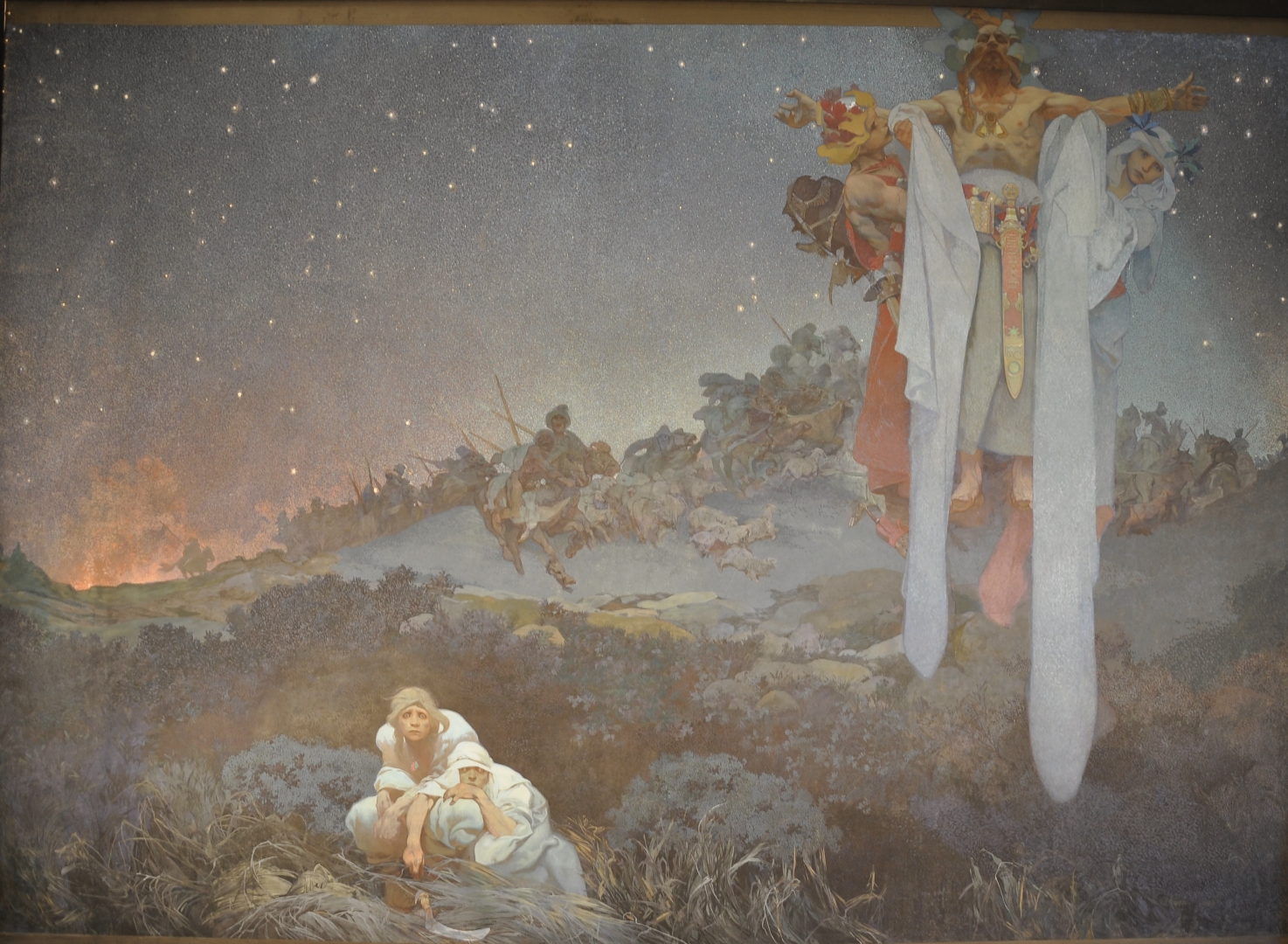SLAVS IN THEIR ORIGINAL HOMELAND
The Slavs' original homeland was located in the wetlands stretching from the Baltic to the Black Sea. Small families and larger tribes – Veneti, Antes, and Sclaveni – settled around the Vistula, Dnieper, Dniester and Western Dvina rivers. They lived by hunting and agriculture. Both them and their possessions posed enticing prey for the nomadic tribes from the east and the south: the Turanians and the Sarmatians. From the north and the west, they were often attacked by Goths. They built their settlements in the swamps to protect themselves from the raiders.
The image represents a clear starry night. On the left, in the back, a Slavic village is burning, invaded by a horde of nomads. The wild raiders killed the old and infirm. They took away the cattle as well as the young villagers. They plan to sell the captives profitably at the large slave market in the city of Kherson at the shore of the Black Sea.
At the bottom of the picture, a man and a woman crouch huddled together. They are the only ones who have saved their lives tonight. Their gaze radiates dread and terror. The overwhelming fear keeps them pinned to the ground, but other emotions start to push through, even stronger: hatred, a desire for revenge, and a craving for life in peace and tranquillity. All these feelings take on a corporeal form, ascend to the stars, and symbolically materialise into the figure of a zhrets, an Old Slavic priest who begs the gods for help.
On the right, he is propped up by an armed young man in red, a symbol of war, and on his left, by a girl in white, a symbol of peace.
The painting expresses the idea that sometimes it is necessary to fight to protect oneself, but one can only flourish and prosper in peace. It has been chosen as an introduction to the whole cycle as it shows the conditions the original Slavs came from and hints at what they are capable of in the future.

